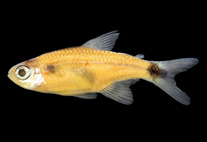Abstract
Chinavia is one of the most diverse genera of Pentatomidae, comprising 80 species distributed in the Afrotropical, Neartic and Neotropical regions. Some groups of species have been proposed in the literature based on morphological similarities or phylogenetic analyses. The geniculata group was proposed to include C. geniculata, C. gravis and C. nigritarsis. However, eleven other species of Chinavia share somatic and genital characteristics with C. geniculata, C. gravis and C. nigritarsis, which allows hypothesizing the monophyly among these 14 species. In spite of the recent contributions to aspects of biology, immature stages and species catalogs in Chinavia, the definition of monophyletic groups within the genus and the establishment of boundaries among its species are essential to understand its diversity and to test hypotheses on biogeography and evolutionary biology. In this study we review the taxonomy of the geniculata group, test its monophyly and propose a phylogenetic hypothesis for the group. We discuss the phylogenetic relationships from a geographical perspective, and provide insights about morphological evolution.

